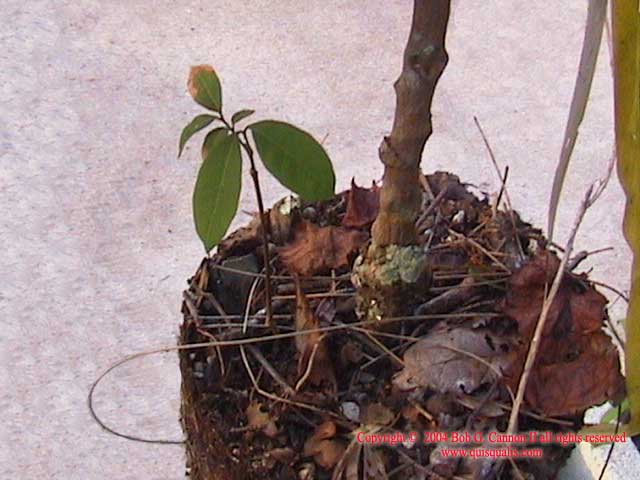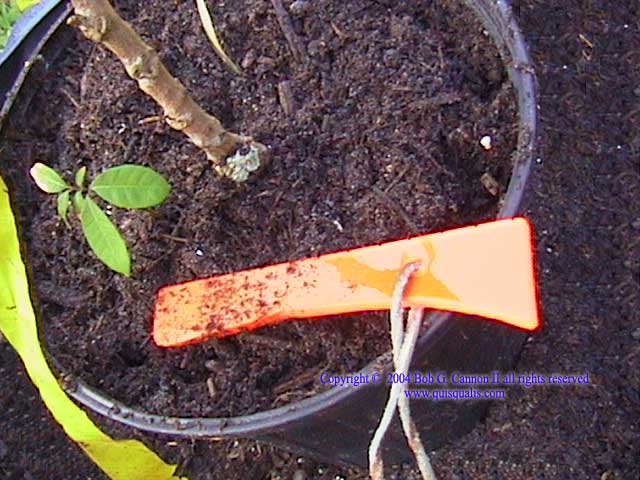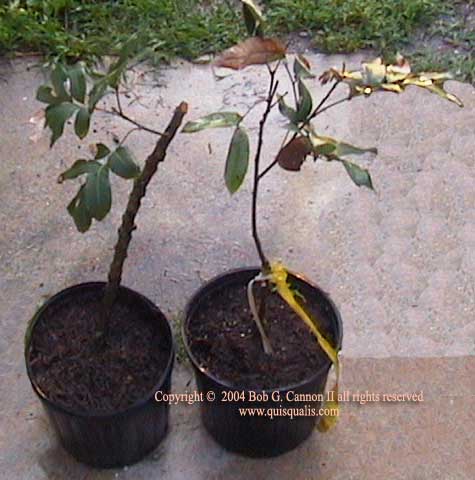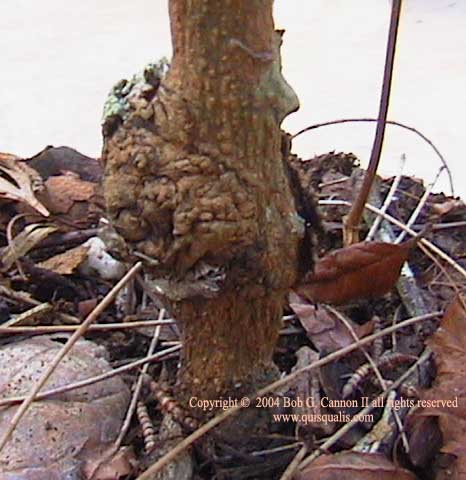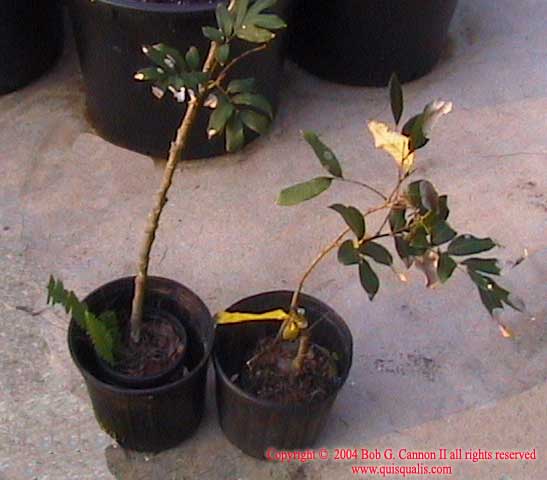
1. Dimocarpus longan 'Kohala' in this
figure the smaller pots have been placed into the destination pots to show
the increase in size.
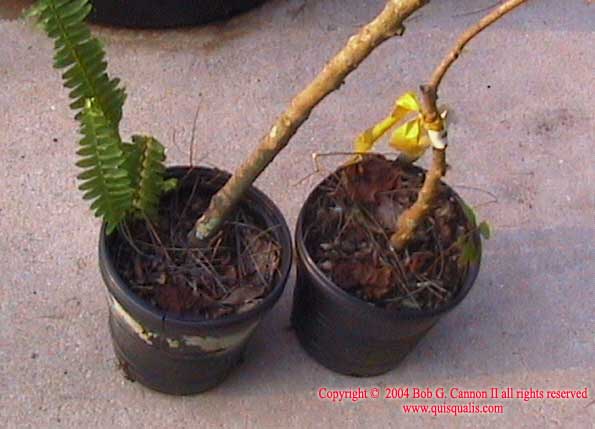
2. You can see that both pots have volunteer plants as well as the original longan. Tag and ribbon on the plant on the left are markers as to layering methods.
